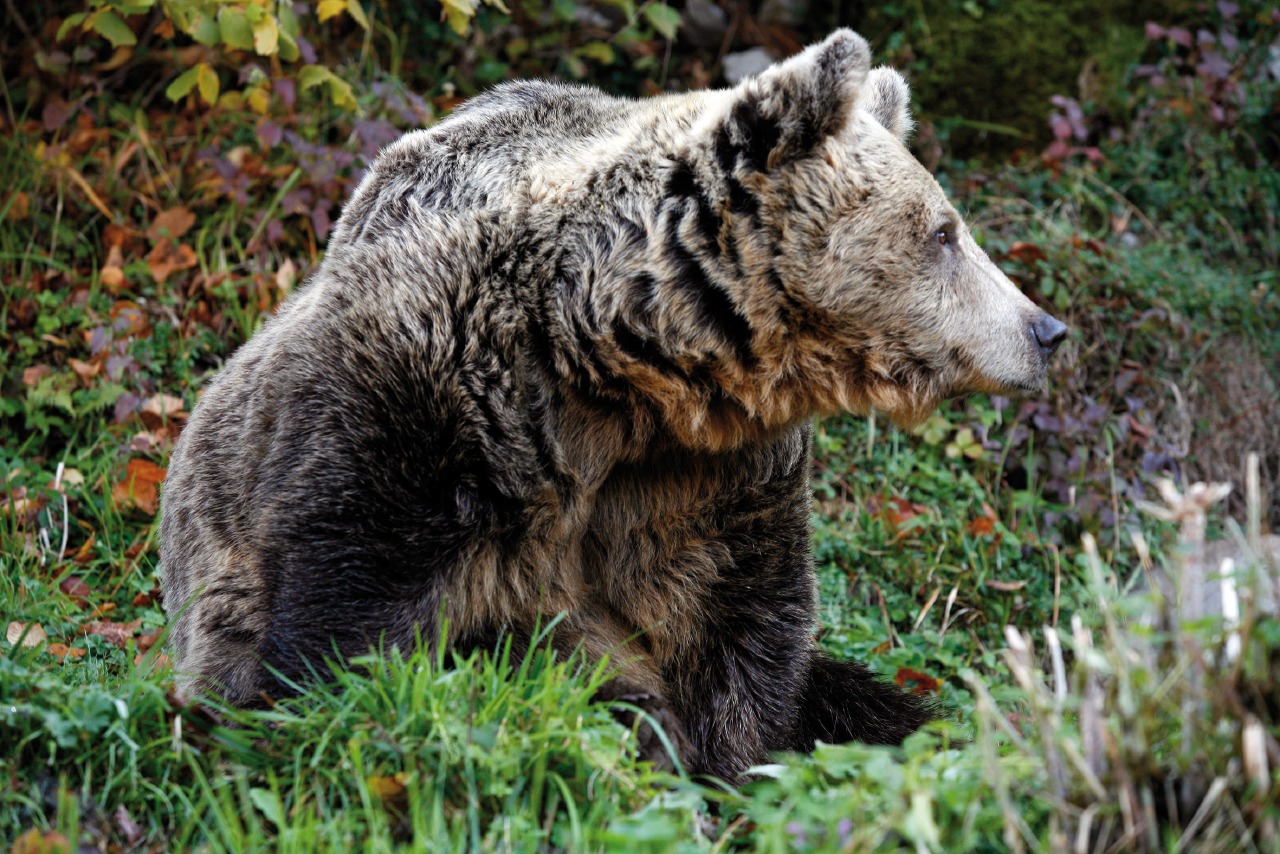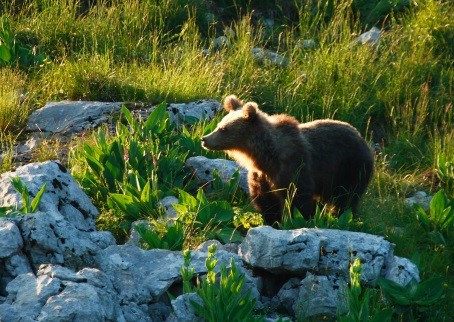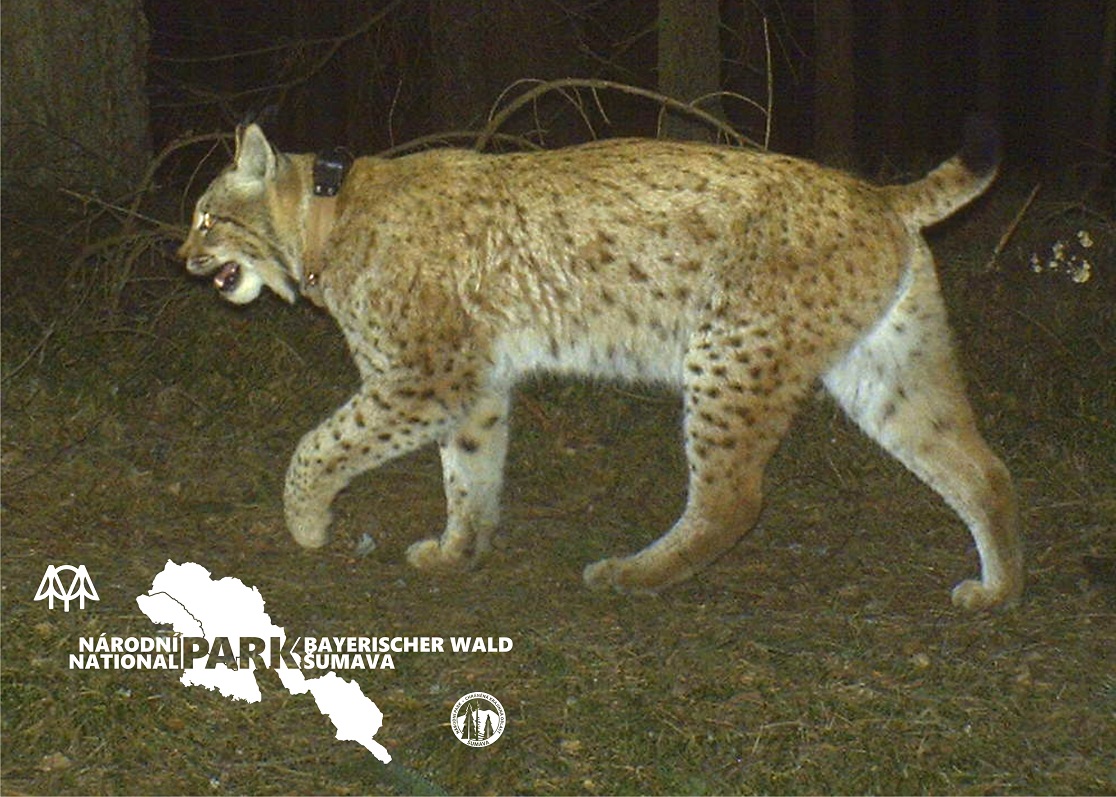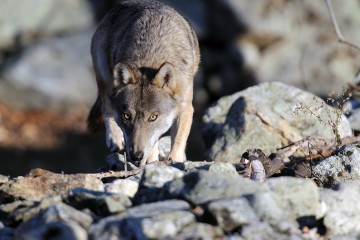Large Carnivores in transboundary protected areas
Large carnivores are some of the most challenging species to maintain or reintegrate back into the natural areas of Europe. Bears (Ursus arctos), wolves (Canis lupus), Iberian lynx (Lynx pardinus), European lynx (Lynx lynx) and wolverines (Gulo gulo) are the main representatives of this group in our continent and, along the years, their populations have fluctuated up and down for several reasons.
During centuries, European large carnivores suffered dramatic declines in numbers and distribution as a consequence of human activity, habitat loss and the decrease of their preys. The predatory nature of these species has pushed them to trespass the boundaries established by humans in the search for food, which resulted in conflict and in the establishment of control measures that threatened their existence. Furthermore, the efforts carried out to manage large carnivores has been continuously challenged by political, socioeconomic and society changes and, as a result, scattered individuals and small populations survived in remote areas where human presence could be avoided.
Nowadays, with the improvements in the quality of their habitat, the abandonment of farmlands, the expansion of forest areas, the return of their prey species, and the existence of favorable legislation and public support, the current situation for large carnivores is quite different from decades ago. Large carnivore’s populations are currently stable in Europe, or growing, and count with large and robust groups of individuals that often expand across new areas. Although some small populations remain critically endangered and a few of them are declining, the presence of large carnivores in the human scene is increasingly more common so, once again, we need to learn to coexist.
To start with, the collection of reliable scientific data, the provision of relevant population estimates, and a common understanding of large carnivore’s conservation status at national and population level is the basis to take sound management decisions. However, large carnivore’s home range is extensive, and as such, they require large areas to live. These areas often cross intra and international borders and occupy territories with different management policies. Hence, the management of these species must be planned on very wide spatial scales to be effective, and it is imperative that a good coordination exists between the different administrations involved. In this toolkit, you will find information and real examples that illustrate the cooperation efforts carried out by different administrations in Europe to effectively manage large carnivores in transboundary protected areas.
EUROPARC is a Member of the EU Platform on Coexistence of Large Carnivores and People. Together we seek to find ways to mitigate conflicts between people and large carnivores and promote successful measures of coexisting. More information on the EU Platform can be found on the website.
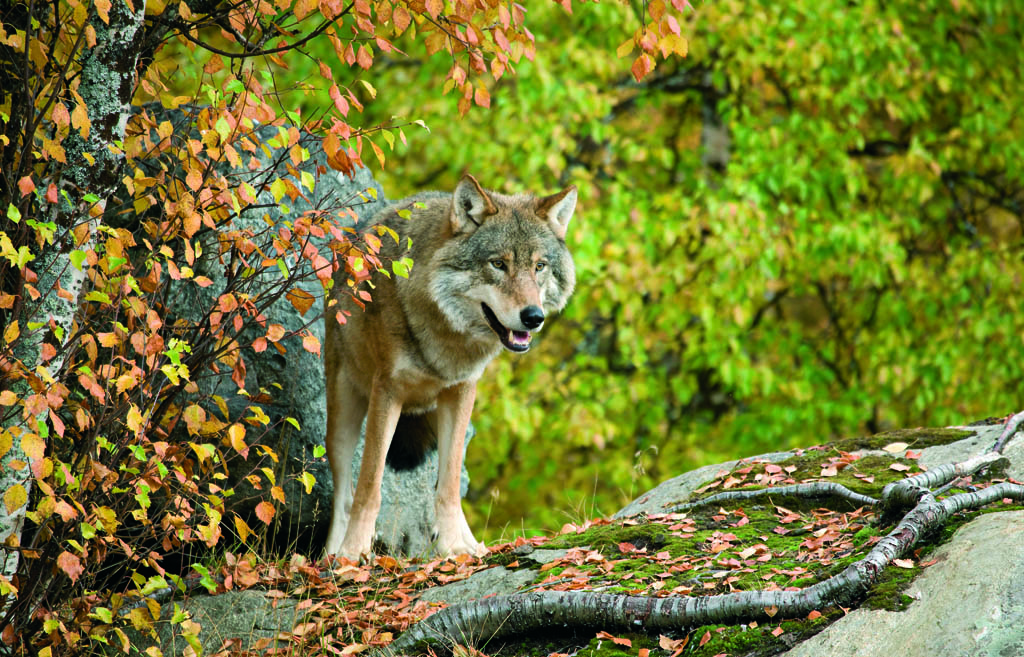
Overview
EU efforts on Large Carnivores and Platform for Co-existence between People and Large Carnivores
The European Commission has initiated a range of measures to encourage cooperation between member states, engaging in dialogue with stakeholders and promoting best practices in management methods in regards to large carnivores.
The following videos and documents for download provide an introduction to the EU’s efforts on the conservation of large carnivores. They also speak about the EU Platform on Coexistence between People and Large Carnivores, a grouping of organisations representing different interests groups which have agreed a joint mission: “To promote ways and means to minimize, and wherever possible find solutions to, conflicts between human interests and the presence of large carnivore species, by exchanging knowledge and by working together in an open-ended, constructive and mutually respectful way”.
Videos
Karmenu Vella: The EU’s Strategy on Large Carnivores and Biodiversity
Karmenu Vella, European Commissioner for Environment, Maritime Affairs and Fishery gives an introduction to the EU strategy on large carnivores and biodiversity.
Dr. András Demeter: EU Platform on Coexistence between People and Large Carnivores
Comprehensive presentation of the EU Platform on Coexistence between People and Large Carnivores by András Demeter, advisor to the Directorate for Natural Capital, Directorate-General for the environment.
EU protection works for wolf, bear and lynx
In the Habitats Directive within the EU it is established that big predators such as the bear, wolf and lynx are protected and, when they show up, should be welcome in the Netherlands, says Arie Trouwborst, Associate Professor of Environmental Law at Tilburg Law School. In Europe we can compare EU members with non EU members; in Switzerland and Norway the population of wolves is very small, in contrast with the growth in EU member states.
Wild brown bears, wolf and wolverine in Finland
An inspirational short film by Oliver Hargreaves dedicated to the large predators of northern Finland. The video particularly focuses on the European Brown Bear, Grey Wolf and Wolverine.
Downloads
-
European Commission: Status, management and distribution of large carnivores – bear, lynx, wolf & wolverine – in Europe, part 1. Summary report.
In 2012 the conservation status of European large carnivores was assessed by a group of experts from each country where large carnivores are present. This report encompasses the best available independent assessment of large carnivore status for the period 2010-2012. Part 1 is the summary report.
-
European Commission: Status, management and distribution of large carnivores – bear, lynx, wolf & wolverine – in Europe, part 2. Country by country data.
In 2012 the conservation status of European large carnivores was assessed by a group of experts from each country where large carnivores are present. This report encompasses the best available independent assessment of large carnivore status for the period 2010-2012. Part 2 is the country by country data.
-
Infosheet on EU Platform on Coexistence between People & Large Carnivores
This brochure provides a short introduction to the EU Platform on Coexistence between People & Large Carnivores, where EUROPARC is represented.
-
Large carnivores know no boundaries. The European populations of large carnivores at a glance.
Infosheet on large carnivores in Europe published by the Large Carnivores Initiative for Europe.
-
European Commission: Key actions for Large Carnivore populations in Europe. January 2015.
Identification of key management actions for improving the implementation of EU policy on large carnivore conservation under the Habitats Directive.
-
LIFE and human coexistence with large carnivores
A publication illustrating the valuable role of the LIFE programme in demonstrating ways of managing conflicts in the area of coexistence. Involving stakeholders such as stockbreeders and the hunting community has been important in reconciling conservation and socio-economic goals.
Brown bear
Case Studies
Videos
How to pluck hair from a bear?
Brown bears’ hair and droppings contain their DNA. This is important for research and management of brown bears. All good in theory, but how does one practically go about collecting DNA?
How to fit a bear with GPS collar?
This video shows how a bear roaming close to and in Slovakian villages is captured and fitted with a GPS collar in order to trace its steps and learn more about its movement patterns.
Downloads
-
Monitoring of the Pasvik-Inari-Pechenga brown bear population in 2015 using hair trapping
he trans-border brown bear population of Pasvik-Inari-Pechenga (Norway-Finland-Russia) has been monitored using genetic analyses of feces collection since 2005. In addition, in 2007 and 2011, hair traps were systematically placed out in the area to collect hairs for genetic analysis, to more precisely determine the minimum numbers of bears in the area. In 2015, we repeated this hair trap study, using the exact same methodology as in 2007 and 2011, to make a direct comparison of the results from all the 3 study years.
-
Brown bears in Europe. Carnivore Damage Prevention News, spring 2016.
The publication of the Carnivore Damage Prevention News facilitates the collaboration between specialists and to improve the exchange of information among carnivore damage prevention projects. This edition speaks mostly about brown bears, 2016.
-
Brown Bear in Dinarides Alps, 2016.
A brochure explaining key features of this species, behaviour, distribution, threats and conservation measures.
-
Non-Consumptive Use of Brown Bear in Tourism: Guidelines for Responsible Practices, 2016.
A compilation and adaptation of best practices in responsible bear tourism from around the world4 to the local reality in the northern Dinarics.
Wolf
Videos
How wolves change rivers
When wolves were reintroduced to Yellowstone National Park in the United States after being absent nearly 70 years, the most remarkable "trophic cascade" occurred. What is a trophic cascade and how exactly do wolves change rivers? George Monbiot explains in this movie remix.
Downloads
-
Wolves in Europe. Carnivore Damage Prevention News, spring 2014
The publication of the Carnivore Damage Prevention News facilitates the collaboration between specialists and to improve the exchange of information among carnivore damage prevention projects. This edition speaks mostly about wolves.
-
The impact of a wolf conservation project on attitudes of the public, hunters and farmers towards wolves in Slovenia, 2014.
MSc Thesis on the effectiveness of a wolf conservation project in improving the coexistence of wolves and humans in Slovenia.
-
Wolf behaviour towards people, 2002.
A Thesis on testing the tolerance of wolves to humans based on 125 encounters.
This toolkit was useful for you? Great!
Keep updated on transboundary parks and large carnivores by submitting your contact details here.
